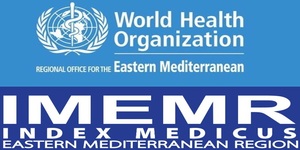Women's Perceived of Mammography in National Center of Early Detection of Breast Cancer at Baghdad Medical City
DOI:
https://doi.org/10.36321/kjns.vi20161.2606Keywords:
Women Perceived, Breast Cancer, MammographyAbstract
Background: breast cancer is the most commonly diagnosed cancer among women worldwide, although breast screening with Mammography can reduce mortality in breast cancer. Women perceived fear, barriers, benefit, and self-efficacy can affect their decision to participation in Mammography screening.
Objectives: The major objectives of this study were to assess the levels of women's perceived Mammography screening, and to find out the relationships between women's perceived Mammography screening and some women's demographic variables such as age, marital status socioeconomic status, and family history of breast cancer, to Find out the correlation between entire perceived Mammography variables, and to predict the effect of perceived barriers on fear.
Methodology: A Descriptive analytical study was carried out in April 1, 2013 to June 20, 2013.A purposive (non-probability) sample of 100 women who were attending the outpatient clinic at National Center for Early Detection of Cancer in Medical City. Data was collected through the use of the Health Belief Model HBM scale questionnaire and the process of the self- administrative report for each woman as a method for collections data. The questionnaire was modify to achieve the objectives of the study, which consisted of two parts; the first part is concerned with the demographic characteristics of the women and ; the second part consist of four subscales measure four concepts including perceived benefits, perceived self -efficacy, perceived barrier, and perceived fear
Results: Results of the study indicate that most of the women at high level of perceived fear. There were significant relationships between women's perceived Mammography screening and their socioeconomic status, there were significant relationships between perceived benefits with barriers, self-efficacy, and there were significant
relationships between Perceived barriers and self- efficacy, and there were a significant relationship between perceived fears on barriers
Conclusions: work at increase health awareness for women about Mammography screening throughout increase educational programs in all media types and elevate awareness levels for all health providers to play an important roles for women's' awareness to attending the Mammography screening centers.
Recommendation: Health providers who work with women in Mammography screening units need to assess women perception of Mammography screening in order to plan, implement, and evaluate psychological health education programs. And public health education should promote awareness of breast cancer and emphasize the advantages of earlier presentation and diagnosis of this disease.
Downloads
Downloads
Published
How to Cite
Issue
Section
License
Copyright (c) 2016 Dr.Bayda'a Abdul Kareem

This work is licensed under a Creative Commons Attribution 4.0 International License.













